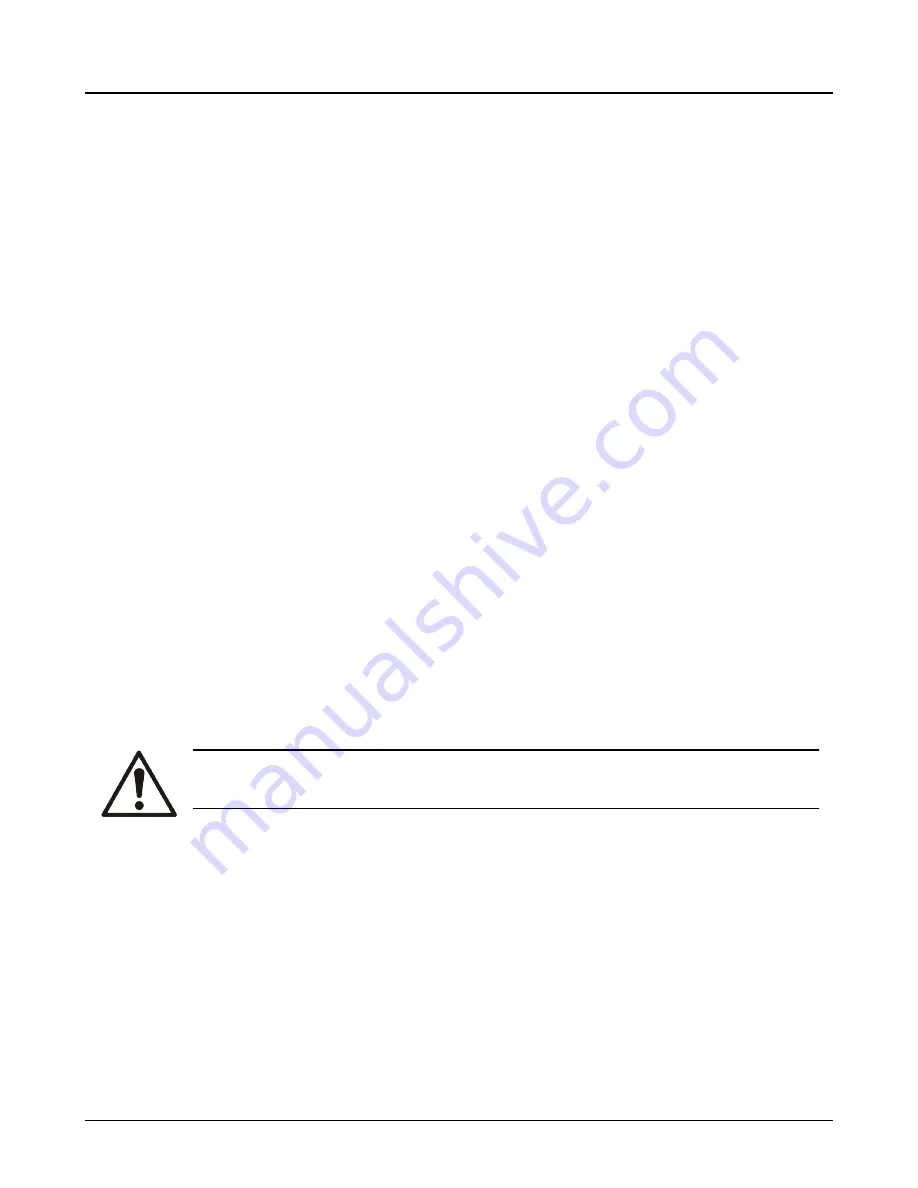
An oil with a higher viscosity than required will increase the bearing operating temperature because of
the extra viscous drag, but never to the point where the viscosity becomes lower than required from the
increased heat generation. It is therefore better for the bearings to have an oil that is too heavy rather
than too light.
Change the oil after the first 200 hours of operation. For normal operating conditions, change the oil at
least four (4) times a year. If the bearing assembly is exposed to dirty or moist conditions, the oil should
be changed more often.
Oil level control
If the level of oil in the bearing housing (134C) is too high, excessive heat may be generated due to
churning. If the level is too low, excessive heat may be generated due to inadequate lubrication. A liquid
level switch connected to the oil sump can be used to warn of a dangerous oil level condition.
Observe the oil level requirements shown on the assembly drawing furnished with the pump. If excessive
heat is experienced within these levels, consult the factory. Be sure that the shaft centerline is horizontal
through the bearing housing
Normal bearing temperature
The running temperature for a bearing assembly depends on many factors such as speed, bearing
loads, lubrication, ambient air temperatures, and condition of bearings. Temperatures higher than the hu-
man hand can tolerate are very satisfactory for temperature and should not be cause for alarm. Sudden
change in temperature without any change in speed or loading can mean a lubrication difficulty or the
approach of bearing failure.
For a given speed and loading, the bearing housing temperature will stabilize at some temperature, usu-
ally below 93°C | 200°F, which will be the normal temperature for the installation. Higher temperatures
than this normal temperature, without any change in speed or loading can mean a lubrication difficulty or
the approach of bearing failure.
Installing bearing
Long bearing life is dependent on careful handling of the bearing when it is out of the housing and during
the installation procedure. Dirt and rough handling are prime enemies of precision bearings. Bearings
should be pressed, not “hammered” into place. If heat is used to facilitate the installation, a hot oil bath is
the best method.
CAUTION:
Risk of physical injury from hot bearings. Wear insulated gloves when using a bearing heater.
Thrust bearing orientation
8.2.1 42-54 (Top Suction) AF with LMR Bearings on page 66
shows the axial thrust bearing (112C) in
the outboard location. This is used for top suction pumps.
End suction pumps have the flow and axial thrust in the opposite direction. Therefore, the complete
thrust bearing assembly is reoriented in the opposite direction. This does not change the basic disas-
sembly procedure, other than the sequence of installing the thrust bearing assembly components on the
shaft.
The illustration shows the thrust bearing (112C) mounted on a sleeve (196). For the other bearing orien-
tation, the bearing is mounted on an extension of the spacer (443), eliminating the separate sleeve.
Shaft sealing
A packed stuffing box or mechanical seal is used to seal the AF pump shaft. Both methods are described
below.
5.1 Preparation for start-up
38
Model AF (42"/1200mm/54"/60"/66") LM/LMR Bearings Installation, Operation, and Maintenance Manual
















































